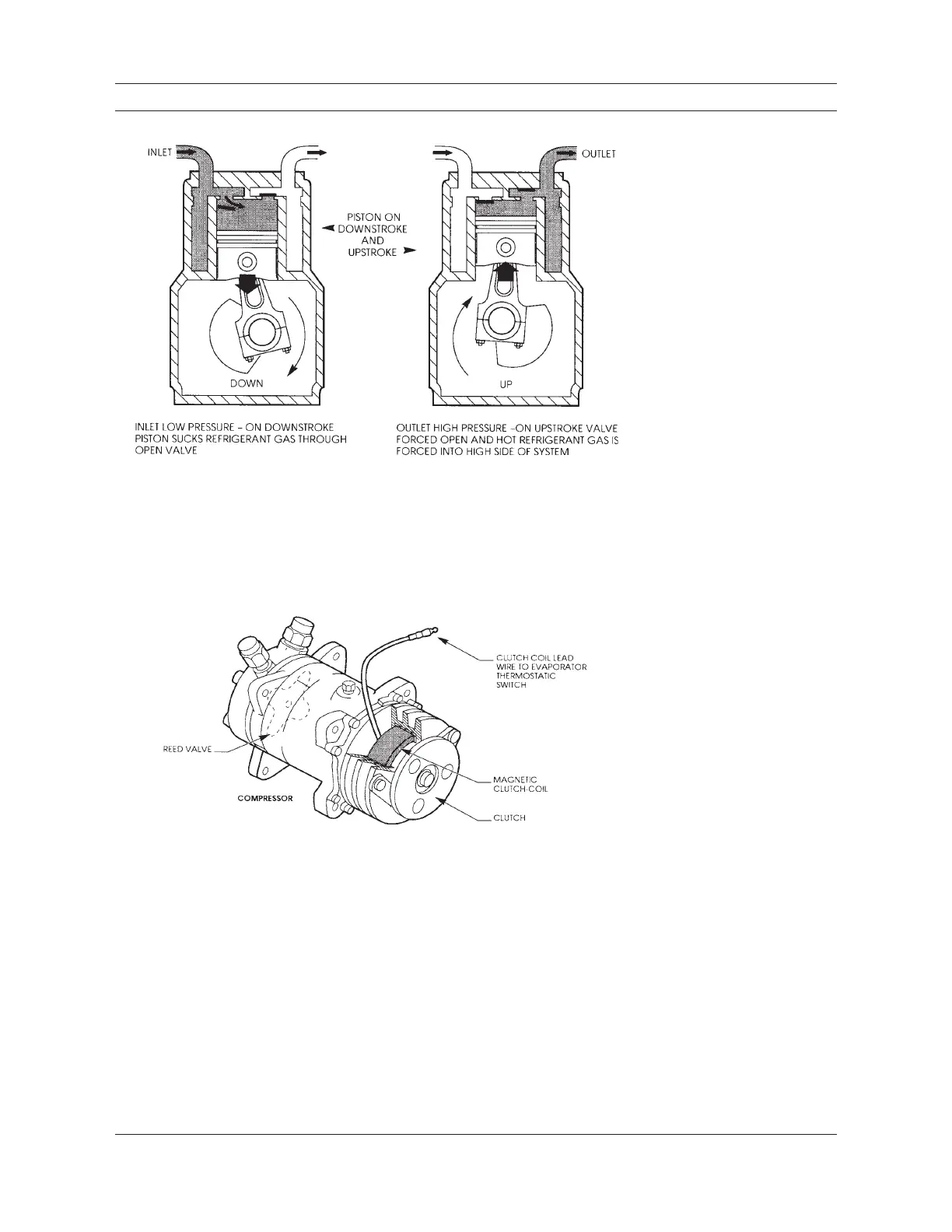III-61
Air Conditioner—System Operation
The clutch is mounted on the shaft of the compressor and is engaged by electromag-
netic action. Part of the clutch assembly is an electromagnetic wire coil. The coil is
energized through a thermostat that senses the temperature in the evaporator coil. If
the evaporator is too warm the electrical contacts close and allows power to flow to the
clutch. The compressor shaft is engaged and moves the refrigerant around inside the
system. Figure 2-4 is a cutaway view of the clutch mounted on the compressor.
2. Condenser
The refrigerant gas leaves the compressor and moves through a high pressure hose to
the condenser. Inside the condenser the gas “changes state” and becomes a liquid. It
is still hot and under pressure. Remember in Chapter 1 when we talked about water at
212 degrees Fahrenheit? Heat energy was involved in the “change of state,” but the
temperature did not change. The same kind of action happens inside the AC system.
The refrigerant gas gives up a lot of heat energy to the outside air as it “changes state”
in the condenser. Figure 2-5 illustrates a condenser. Air moving through the condenser
absorbs heat from the refrigerant. The amount of air flow through the condenser is the
major factor in how well the condenser functions.
Figure 2-3
The compressor inlet is
low pressure and the outlet
is high pressure. The reed
valves are one way. They
open to allow refrigerant gas
to enter the compressor on
the down stroke and exit on
the upstroke. Note the open
valves in the illustrations.
Figure 2-4
The clutch shown here has
its electromagnetic coil
mounted on the compressor
body. When the coil is ener-
gized, magnetic force pulls
the clutch drive plate into
the pulley. This action locks
the pulley to the compressor
drive shaft and drives the
compressor.

